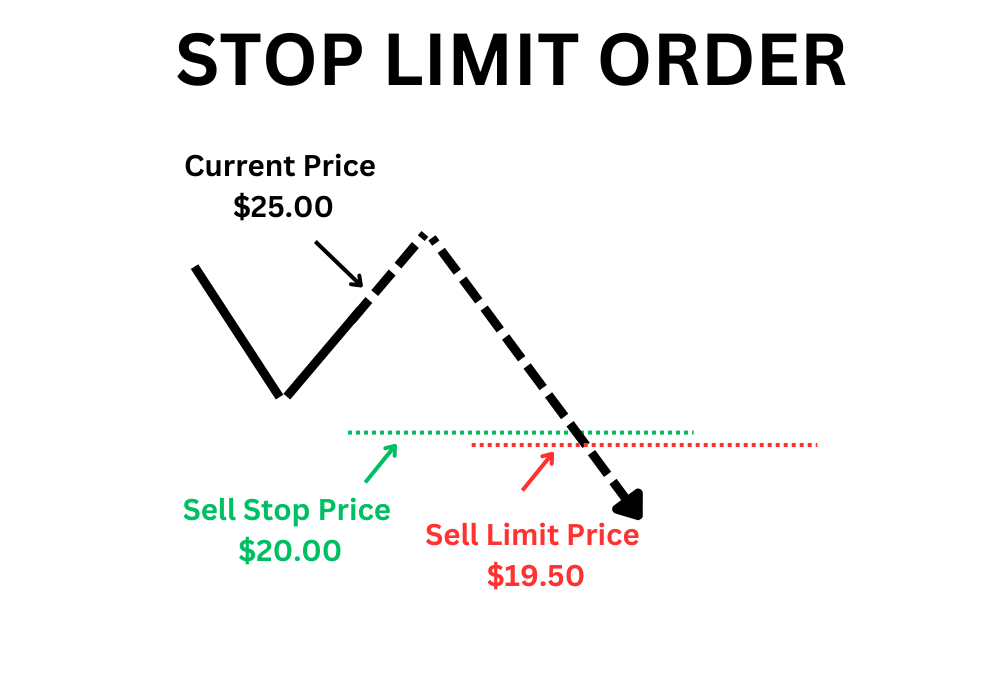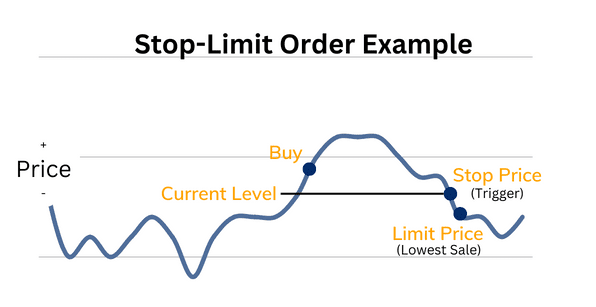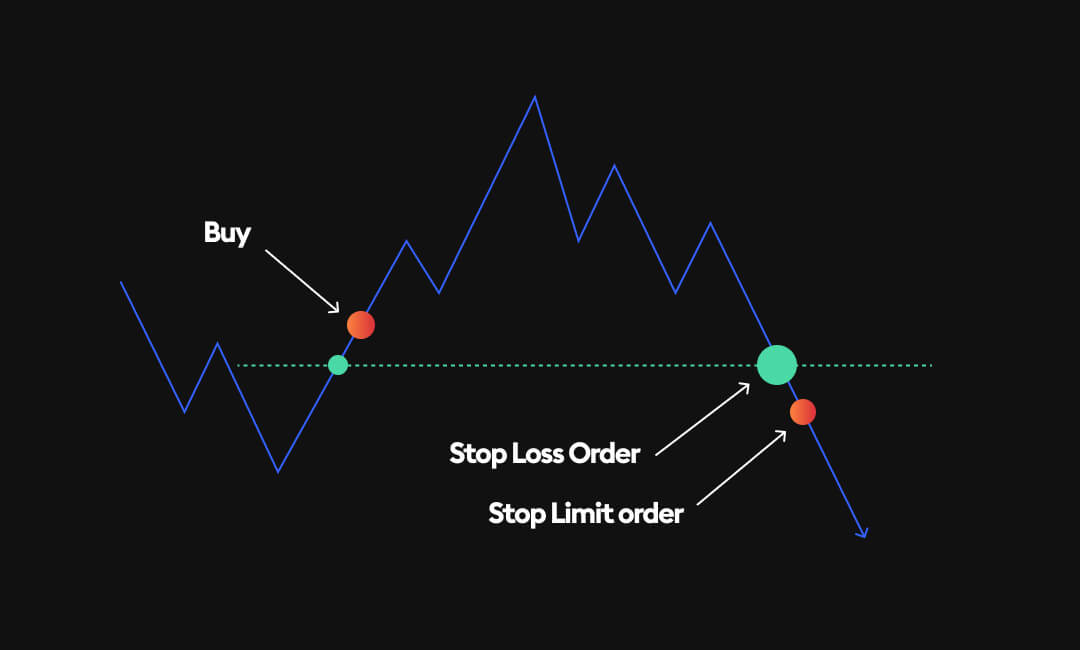A stop limit order is a type of trading instruction that combines the features of a stop order and a limit order. It allows a trader to specify a stop price to trigger the order and a separate limit price to define the lowest (for a sell) or highest (for a buy) acceptable price.
This dual condition offers more control compared to a standard stop loss, which simply becomes a market order when the stop price is reached and may fill at any available price.
The stop limit order is particularly useful for managing risk and improving execution accuracy, especially in markets prone to volatility and slippage. Slippage happens when an order is filled at a price different from the expected level, often due to rapid price movements or limited market depth. A stop limit order limits this risk by executing only if the price remains within the trader's defined range.
Why Do Traders Use a Stop Limit Order?

Traders often use a stop limit order to avoid unfavourable executions in turbulent markets. Imagine a trader holding a stock currently priced at $100, who wants to sell if the price drops to $98, but not for less than $97. They can set a stop price at $98 and a limit price at $97. If the stock falls to $98, the order becomes active, but it will only execute if a buyer is willing to pay $97 or more. If the price falls too quickly and skips below the limit, the order remains unfilled.
This trade-off is what differentiates a stop limit order from a stop loss. With a stop loss, the trader sacrifices price control in exchange for execution certainty. With a stop limit order, the priority shifts to price control, even at the risk of missing the execution entirely. This makes it a valuable tool for those who place high importance on avoiding bad fills.
How a Stop Limit Order Works in Practice

Let's look at another example to understand the mechanics. A trader believes that if a certain cryptocurrency breaks above $1,500, it could surge higher. However, they do not want to buy unless they can get in at $1,510 or better. They set a stop limit order with a stop price of $1,500 and a limit price of $1,510. If the price touches $1,500, the order becomes active, but it will only execute if the market still offers the asset at $1,510 or less.
The risk here is that the price may break $1,500 and immediately shoot to $1,520, skipping the limit range entirely. In such a case, the order remains unexecuted, and the trader misses the opportunity. Yet, for many traders, that is an acceptable outcome because it avoids the possibility of overpaying or entering at a peak.
The Strategic Role of the Stop Limit Order
A stop limit order is especially useful in technical trading, where precise entry or exit points are key. Traders may use it to place conditional trades around known support or resistance levels, anticipating breakouts or breakdowns. Unlike a simple limit order, which waits passively for price to reach a certain point, a stop limit order activates only after confirmation, giving the trader both responsiveness and control.
This order type also works well in automated strategies or pre-planned risk management systems. If a trader cannot monitor the market closely, placing a stop limit order can ensure their trades are handled according to a strict plan rather than emotional impulse or delayed reaction.
Key Benefits of Using a Stop Limit Order
The primary benefit of using a stop limit order lies in its precision. It allows traders to avoid the worst-case scenarios of market execution during times of sudden volatility or thin liquidity. This is particularly relevant in instruments that are prone to price gaps, such as small-cap stocks or certain futures contracts. A stop limit order prevents execution outside the defined acceptable price range, which can be critical in preserving capital.
Another advantage is psychological. Traders often find it easier to manage emotions when they know their trades will only be executed under exact conditions. This supports more disciplined trading and helps remove panic-based decisions.
Limitations and Considerations
The main drawback of a stop limit order is the risk of non-execution. If the market hits the stop price but fails to trade within the specified limit range, the order remains open. This could result in greater losses than intended or missed profit opportunities. In some market environments, particularly during news releases or flash crashes, prices can move past stop and limit levels in seconds, leaving the order stranded.
It is also important to understand that stop limit orders are not universally treated the same across all brokers or platforms. Some may not offer this type of order, or they may have specific restrictions or expiry rules. Traders must review their broker's policy and test how orders behave under different market conditions.
Stop Limit Order vs Other Order Types

The stop limit order serves as a midpoint between stop loss orders and pure limit orders. A stop loss provides guaranteed execution with price uncertainty. A limit order guarantees price but does not execute until that price is reached. The stop limit order introduces a balance, activating only after the stop price is reached and executing only at the trader's predefined price range.
This makes it suitable for traders who are willing to accept the risk of a missed trade in exchange for better price control. It is not recommended for situations where immediate execution is essential, such as during fast-moving sell-offs or when closing out a losing position quickly.
When to Use a Stop Limit Order
A stop limit order is best used when market conditions are uncertain, and price control is more important than execution speed. Traders might place such an order ahead of earnings reports, central bank announcements, or geopolitical events. It is also effective in trending markets where pullbacks may offer optimal entries, but only if prices remain within a certain range.
Many experienced traders use stop limit orders as part of their broader strategy, combining them with trailing stops, alerts and real-time chart monitoring. The key is to have a plan and stick to it, using the order as a tool rather than a guarantee.
Final Thoughts
The stop limit order is a powerful addition to any trader's toolkit. It offers control, discipline and protection against unfavourable fills. However, it also introduces the risk of non-execution, which means it should be used with care and a clear understanding of the market context.
Mastering the stop limit order takes practice and patience, but for those who value precise execution, it can be instrumental in managing risk and improving outcomes. When used correctly, it becomes more than just an order type — it becomes a strategic decision.
Disclaimer: This material is for general information purposes only and is not intended as (and should not be considered to be) financial, investment or other advice on which reliance should be placed. No opinion given in the material constitutes a recommendation by EBC or the author that any particular investment, security, transaction or investment strategy is suitable for any specific person.
























